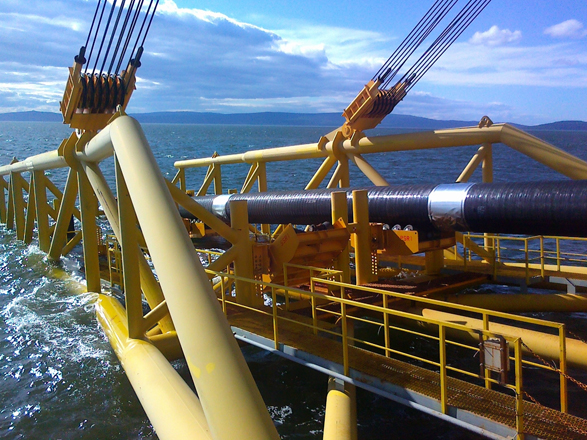Baku, Azerbaijan, July 3
By Elena Kosolapova - Trend:
Italian Saipem's pipe-laying vessel Castoro Sei has set sail to Russian waters to prepare for offshore construction of the Turkish Stream gas pipeline in the Black sea, a source close to the project told Trend.
The Castoro Sei is a S-lay vessel suitable for both shallow and deep waters. It has already laid several trunklines, including the North Stream Pipeline.
Saipem will work within the €2 billion contract awarded by subsidiary of the Russian Gazprom - South Stream Transport BV in March 2014. Saipem has been contracted for the construction of the first line of the South Stream Offshore Pipeline, but in December 2014 the project was abandoned and the contract was delayed. The project has changed its route and had been renamed to the Turkish Stream so far, but Saipem will work on a project within the mentioned contract.
According to the contract, Saipem would construct the first line, at depths of up to 2, 200 meters within the contract. In addition to Castoro Sei vessel, Saipem will employ Saipem 7000, the state of the art J-Lay vessel suitable for ultra-deep water for the construction of the first line of the Turkish Stream pipeline. Saipem 7000 has already constructed the Blue Stream pipeline in the Black Sea.
In December 2014, Russia terminated its South Stream project, which was planned to pass in the Black Sea and through Bulgaria and deliver gas to the Balkan republics, as well as Hungary, Austria and Italy. This cancellation made way for a new project, dubbed the Turkish Stream pipeline. The new pipeline will pass through Turkey, with a gas hub on the Turkish-Greek border for further distribution to consumers in southern Europe.
The offshore pipeline of the Turkish Stream will consist of four parallel pipelines running through the Black Sea. The pipelines will enter the water near Anapa, on the Russian coast, and come ashore on the Turkish coast some 100 kilometres west of Istanbul, near the village of Kiyikoy.
From Kiyikoy, an underground pipeline will be developed connecting TurkStream to the existing network at Luleburgaz. The route will reach Turkish town of Ipsala as a final point.
Edited by S.I.
Follow the author on Twitter:@E_Kosolapova






